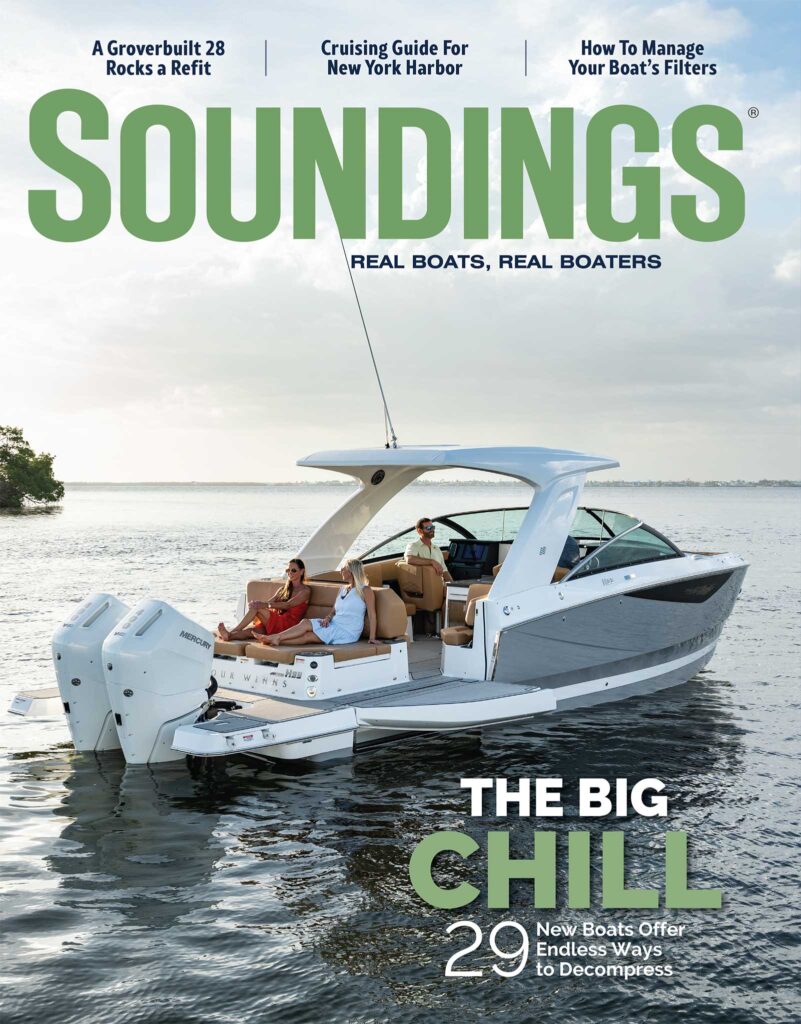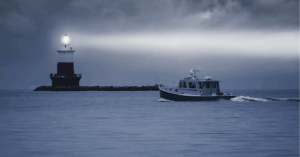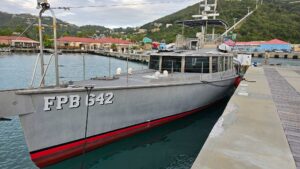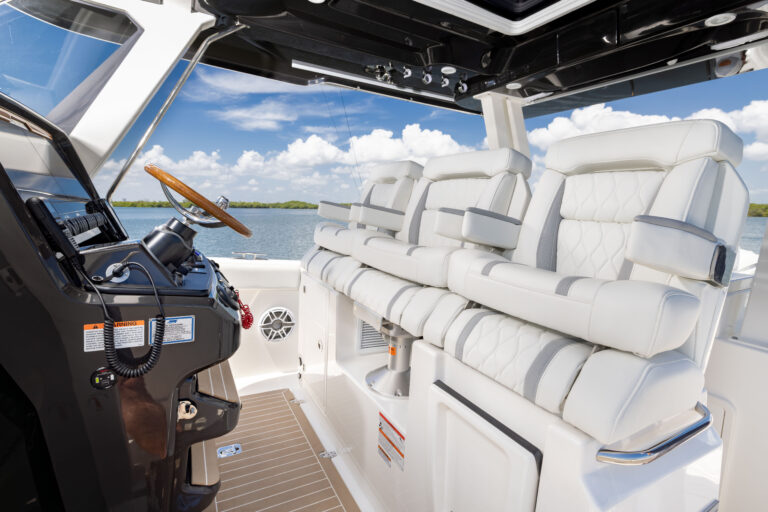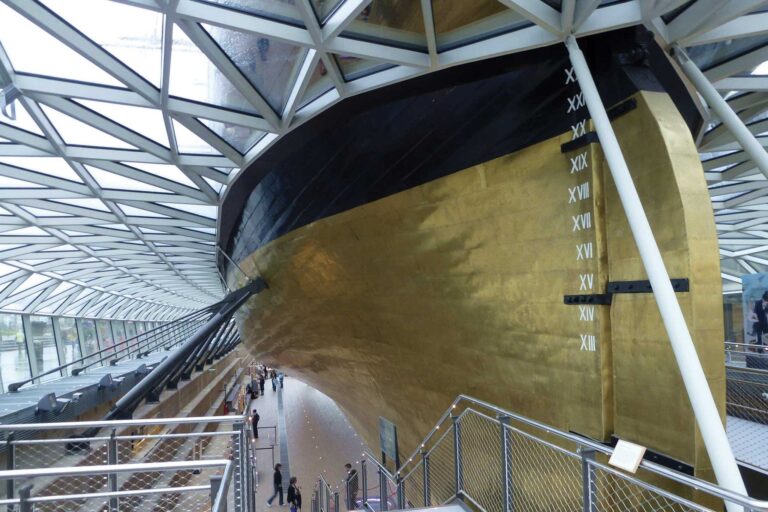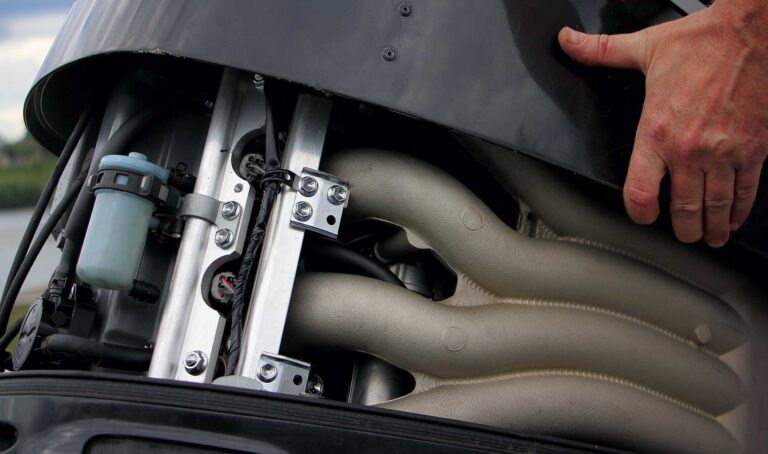In May, I saw a familiar boat at the Frank S. Farley State Marina in Atlantic City. I recognized Mack
Attack as the Viking 48 Convertible that served as a test bed for a pair of Scania Di16 diesels—V-8s with 1,150 horses—that debuted in the U.S. last year. Gary Caputi had sea-trialed the boat for Soundings and his reporting showed the engine had one of the highest power-to-weight ratios in its class. He was enthusiastic about its potential.
In Atlantic City, I got the chance to board the boat, only on this day, it served as a test platform for something different: validating the use of renewable diesel fuel on a performance sportfisherman.
Viking Yacht Company and Mack Boring, the U.S. distributor for Scania, had arranged for media to observe how the boat ran with RD99, a fuel made from 100 percent sustainable sourced renewable materials (think animal fats, used cooking oils and inedible oils). It’s a “drop-in” replacement for petroleum-based diesel, meaning RD99 can be used in existing engines without any modifications to the iron. “There’s nothing we had to do or change to the propulsion on Mack Attack for this test,” said Patrick McGovern, CEO of Mack Boring, who was aboard that day.
Coordinating our sea trial, I learned, was not a snap, because renewable fuel is tough to find on the East Coast of the U.S. “It’s easier to locate on the West Coast, where its use is more common due to regulatory mandates, but it took us about 9 months to get a couple hundred gallons here,” said McGovern. “We ran the boat with it for the first time only yesterday and found that the 48 operates pretty much exactly the same as it does with conventional diesel fuel.”
The tanks, McGovern said, were emptied prior to being filled with RD99, but a benefit of renewable fuel is that it can be blended with petroleum diesel “without issue, which makes it more user-friendly.”
As we left the marina, John DePersenaire, director of government affairs and sustainability at Viking Yachts, cited more pros of running with renewable fuel. The environmental benefit is key: Although tailpipe emissions are the same as regular diesel, lifecycle greenhouse gas emissions can be reduced by up to 70 percent. Renewable fuel also burns with less smell and less soot, which means hullsides stay cleaner.
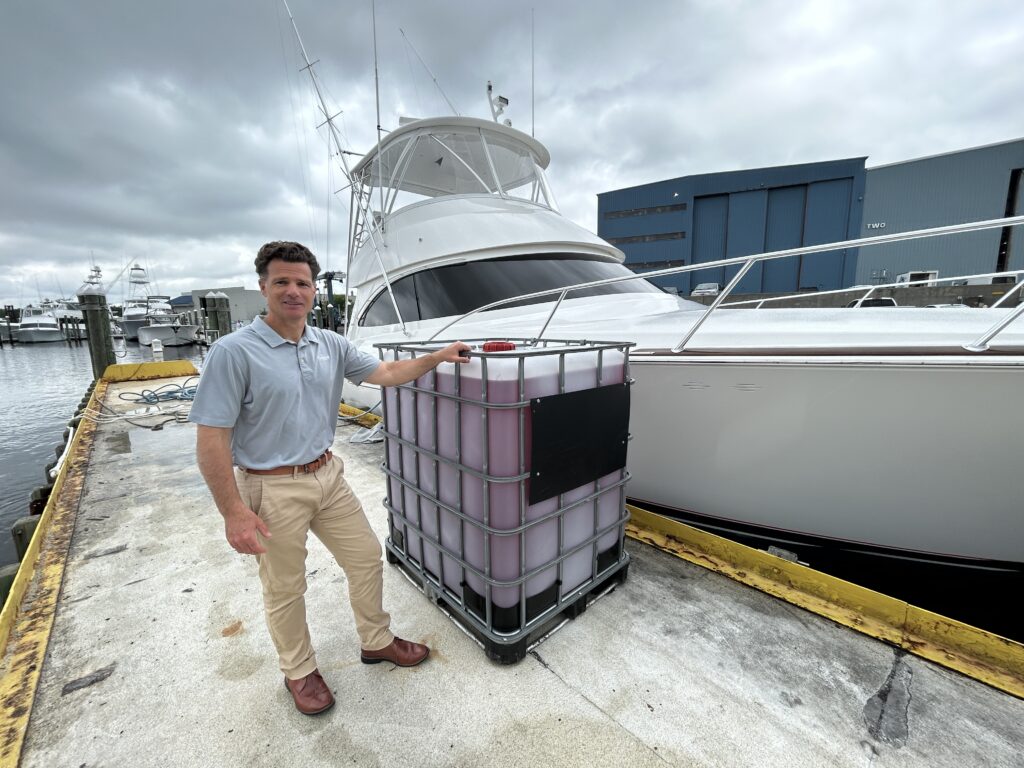
In addition, there’s no measurable performance loss. “Fuel burn and range remain virtually unchanged,” said DePersenaire (shown above). On Mack Attack, the numbers proved that out. With RD99, the 48 ran most efficiently at 1700 rpm, making 23.9 knots and burning 68 gph. The same boat with conventional diesel fuel hit 24.7 knots at and burned 63.5 gph.
As for disadvantages, renewable fuel can be more expensive than conventional diesel, “with a premium of about $1 to $1.25 per gallon,” said DePersenaire. However, prices are expected to decrease as production scales. Getting production to scale, though, is contingent on awareness, and that’s why our group was in the cockpit of Mack Attack, sniffing over the transom for any foul odors (there was none) and scanning for signs of dark smoke (again, not an issue).
Viking hopes demonstrations like this will encourage industry adoption. According to DePersenaire, that day may not be far away. “The aviation industry is all in on sustainable fuels. As that ramps up we expect there will be an impact on the marine sector. For now, demonstrations like this are an important step in showing how performance and sustainability go hand in hand.

